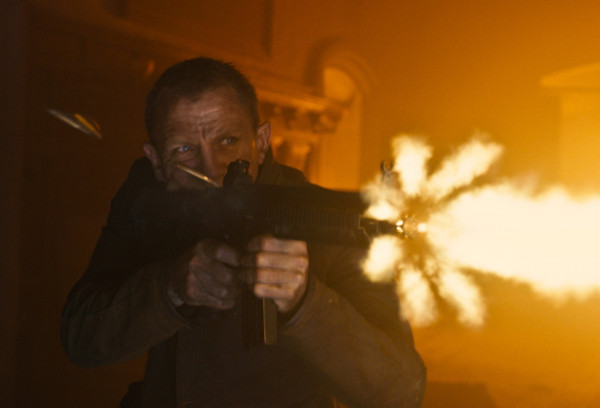Gun Violence In PG-13 Movies Outstripping Rated-R Flicks: Study

Gun violence is skyrocketing in PG-13 movies, which have become even bloodier than movies restricted to legal adults, according to a new study.
Ohio State University and University of Pennsylvania researchers scrutinized a pool of 915 films, all drawn from the 30 highest-grossing movies for every year between 1950 and 2012. Experimenters identified all the violent scenes in those movies, and looked at what portion of the violence involved a gun. They published their results Monday in the journal Pediatrics.
The researchers were particularly interested in the presence of guns in PG-13 movies, a rating category added by the Motion Picture Association in 1985. The category has ballooned since then –- 13 of the top-grossing films in 2012 were PG-13, including 7 of the top 10, according to the MPAA.
When they analyzed the data, the scientists saw an overall increase in gun violence in all the films from 1985 to 2012. But the sharpest increase in gun violence was in PG-13 movies, which have grown in number to match and even outpace R-rated movies.
Between 1985 and 2010, R-rated movies typically had about 1.5 segments involving gun violence every hour. G and PG movies aimed at younger children also held steady over that same time period at around .4 segments of gun violence per hour. But PG-13 movies started from zero gun violence scenes in 1985 and began rising steadily, and they have revved up the gunplay even more since 2005. By 2010, an average PG-13 movie had as many sequences with gun violence as an R-rated movie; in 2011 and 2012, the PG-13 movies surpassed the supposedly more adult category.
"It's shocking how gun use has skyrocketed in movies that are often marketed directly at the teen audience," lead author and OSU psychologist Brad Bushman said in a statement Monday. "You have to wonder why we are seeing this surge in gun violence in PG-13 movies, when it isn't appearing in G, PG and R-rated films."
In their paper, the authors speculate that this violent trend in movies easily accessible to younger teens may be strengthening what’s called the “weapons effect.” Various studies have shown that the mere presence of a weapon -- or even hearing a description of a weapon -- can increase aggression. The sight of guns in films, combined with violent media, may make gun violence in the movies a “double whammy” in reinforcing the weapons effect, Bushman and colleagues said.
“Even if youth do not use guns, these findings suggest that they are exposed to increasing gun violence in top-selling films,” the authors wrote. “By including guns in violent scenes, film producers may be … providing youth with scripts for using guns.”
Bushman and his colleagues point to other studies showing that young people are more likely to start smoking or drinking after seeing movie characters that puff or imbibe. Similarly, they think that kids will be more interested in guns after seeing them blast away in the movies.
Critics of media violence research point out that despite the rise in blood-soaked movies, TV shows and video games, crime rates in the real world are falling. While juvenile crime spiked in the early 1990s, arrests of people under 18 have been steadily declining in recent years, falling back below 1980s arrest rates. While the juvenile arrest rate for violent crimes – murder, rape, robbery and assault – grew from 300 to 500 per 100,000 youths between 1980 and 1994, it fell below 250 arrests per 100,000 minors by 2010, according to the John Jay College of Criminal Justice [PDF].
SOURCE: Bushman et al. “Gun Violence Trends in Movies.” Pediatrics published online 11 November 2013.
© Copyright IBTimes 2025. All rights reserved.





















